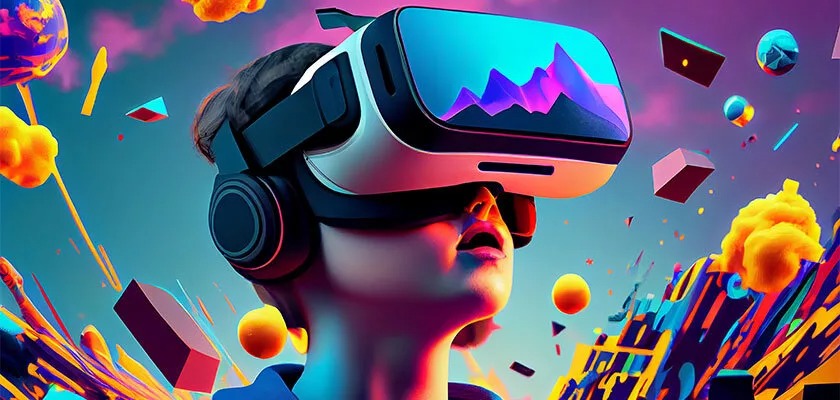Virtual Reality (VR) technology has emerged as a transformative force in the world of entertainment, reshaping the way we consume content and offering immersive experiences that were once the stuff of science fiction. With a blend of cutting-edge hardware and innovative software, VR is altering the entertainment landscape in profound ways, from gaming to film, education, and beyond. In this article, we will explore how VR is revolutionizing entertainment, the key sectors it’s impacting, and its promising future.
The Rise of Virtual Reality
Evolution of VR Hardware
The journey of VR began with bulky headsets and limited capabilities. However, over the past decade, significant advancements in VR hardware have made headsets more compact, comfortable, and affordable, opening doors for wider adoption.
VR Content Development
VR content has evolved from basic experiences to rich, interactive environments. Game developers, filmmakers, and content creators are now embracing VR to offer unique and engaging experiences to users.
Gaming in a New Dimension
Immersive Gameplay
VR gaming takes players beyond the screen and into the heart of the action. With motion tracking, haptic feedback, and realistic graphics, gamers can explore virtual worlds like never before.
Diversity of VR Games
From action-packed adventures to serene explorations and mind-bending puzzles, VR offers a diverse range of gaming experiences to cater to different tastes and preferences.
Cinematic VR Experiences
Storytelling in VR
Filmmakers are using VR to craft immersive narratives that transport viewers into the story. VR films allow audiences to become active participants rather than passive observers.
Film Festivals and VR
VR films are gaining recognition at major film festivals, adding a new dimension to the cinematic experience. Festivals like Sundance now feature dedicated VR sections.
Education and Training
Virtual Classrooms
VR is revolutionizing education by creating virtual classrooms where students can interact with 3D models, explore historical sites, and engage in hands-on learning.
Training Simulations
Industries such as aviation, healthcare, and military are using VR for training simulations, reducing costs and enhancing safety.
Healthcare and Therapy
Pain Management
VR is being used to manage pain and anxiety in medical settings. Patients can immerse themselves in calming environments during procedures.
Exposure Therapy
Therapists are using VR to treat phobias, PTSD, and other mental health conditions through controlled exposure therapy.
The Future of VR in Entertainment
Enhanced Graphics and Realism
As VR hardware continues to improve, we can expect even more realistic graphics and experiences, blurring the line between virtual and real.
Social VR
Multiplayer VR experiences are on the rise, allowing users to connect with friends and strangers in virtual spaces for games, concerts, and social interactions.
VR Beyond Entertainment
VR is finding applications beyond entertainment, such as architecture, engineering, and telemedicine, indicating its potential for widespread adoption.
Challenges and Considerations
Accessibility and Cost
While VR is becoming more accessible, high-quality VR experiences can still be costly, limiting access for some users.
Motion Sickness
Some users may experience motion sickness when using VR, which needs to be addressed as the technology evolves.
Conclusion
Virtual Reality is indeed changing the landscape of entertainment by offering immersive and interactive experiences that were once unimaginable. From gaming and film to education and therapy, VR is making its mark in various industries. As technology continues to advance and VR becomes more affordable and accessible, we can anticipate a future where VR is an integral part of our daily lives, reshaping how we consume content and experience the world around us. The possibilities are limitless, and the journey of VR is just beginning.
